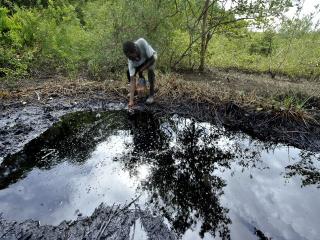 (Prensa.com) The journey began on Sunday September 18 at 4:00 am with the approach of a bus type goat by the team of Financial Tuesday Albrook Terminal.
(Prensa.com) The journey began on Sunday September 18 at 4:00 am with the approach of a bus type goat by the team of Financial Tuesday Albrook Terminal.
The first destination was Metetí, population of the province of Darien. The intent of journalism: finding oil, the black liquid that the Government intends to exploit through a tender in the coming months.
Still dawns and a score of passengers, mostly women and children, fight against madrugonazo. Their tell-tale dark circles. Since the beginning of the trip it became obvious that the youth of the driver was inversely proportional to the speed of the goat. On the radio blaring, vallenato, bachata and melodies of Menudo.
Metetí The journey has two stops, one in the town of Agua Fria, where a checkpoint of the State Border Service (SENAFRONT) requests identification documents and checks the luggage of travelers. The other is in Santa Fe, a town where the goat takes more passengers.
It’s 10:00 am and we Metetí. We had another smaller group of 12 positions, headed for Puerto Quimba. It was so small that the baggage was tied on the roof for everyone to be seated a little comfortable for the next 45 minutes.
The road to the port is similar to those offered in CNN’s news of Libya or Afghanistan. The holes in the road forcing the driver to zigzag and avoid destruction of cushions and passengers. On the sides of the road, the cattle graze indifferent to the noise of the engines.
In Puerto Quimba SENAFRONT another post, this time with a small food kiosk with a makeshift parking lot. At this point in Panamanian geography boats are taken to La Palma, capital of Darien. It takes about an hour in a boat with outboard motor.
In La Palma most homes is wood. On its beaches people do not bathe. The reason: the water in the toilets falls directly into the vast sea of faces.
In every corner there is music. In Darien vallenato is like air … It’s everywhere.
The boatmen tell us that the only way to reach Garachiné, one of the people involved in the story of oil is to be from 7:00 am Monday at the pier waiting for a boat to take us for $ 18 person.
When advised, were facing the pier. After four hours of waiting, there comes a boat to Sambu’s population, close to ours. We negotiated with the boatman, and managed to convince a previous stop in Garachiné. If it had not accepted, would have to wait another 48 hours in La Palma, as the boats only come to this town on Monday, Wednesday and Friday.
Before the trip the passengers, mostly fishermen and teachers, make sure to carry a load highly prized in Sambu: dozens of gallons of ice cream. There, no firm sells the “delicacy” and the inhabitants themselves are responsible for distributing the cold smiles multiply gift.
At low tide, and then an hour and a half in the boat, we went down to 400 meters from the edge of the beach and walk barefoot on seashells.
Already Garachiné, after checking mandatory SENAFRONT in another post, we asked the people by an old abandoned oil field by the company since 1928 Gula, an expert in field exploration.
A man carrying cement in a wheelbarrow tells us about someone who can lead us to the site. After a quick search of our guide, emerges from a side street the farmer Abel Lopez, who gladly offers to take us to one side of his property “where the oil leaves the ground.”
After squaring the cost of travel, Abel enlists the help of two other peasants of the area to take us on a four wheel drive vehicle.
The ride in the back of the truck is standing. It’s raining. It is 1:00 pm and is already being felt with greater intensity than we are almost there black.
The journey by dirt road takes half an hour to reach the area of Calle Larga. There one of the locals up some logs that serve as the division of an estate, and begins another journey another 30 minutes through four successive farms.
By taking the road impassable for vehicles, five visitors (the three farmers, photographer and journalist) begin a long route on foot.
Although native to this land, Abel does not always lived here. Of 53 years and worn machete, open track through the bush and remembers his time spent by police, which left the body in the mid 1980’s by “discovering an act of corruption.”
A 34 hours after leaving Panama, we walked through the mud and the harsh reality is that we have seen oil. We went through a mangrove swamp and our feet hit a cangrejal of hundreds of thousands of black shellfish the size of a coin of 50 cents on the dollar.
Tired and sweaty, Abel surprises us by turning your head. We smile.
“We’re here!” He says with a machete in his hand pointing to a black puddle. Stretch your hand and dip it out to show how the dark sticky liquid soaks into your palm.
The 35-hour ordeal has ended.
Here’s the oil.
Are 3:17 pm Tuesday and after an exhausting journey, the daily La Prensa recorded for history the emanation of black gold on land Darien.
Tuesday’s edition Financial, know the government’s plans to bid for international companies in Darien two sedimentary basins and learn about the risks and benefits included in the search for black gold called in Panama.